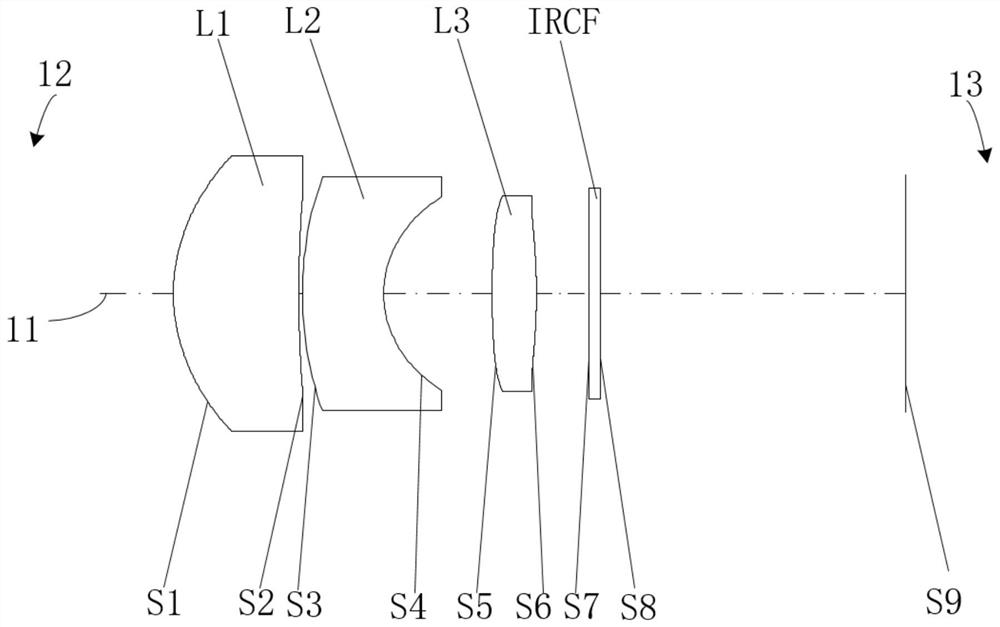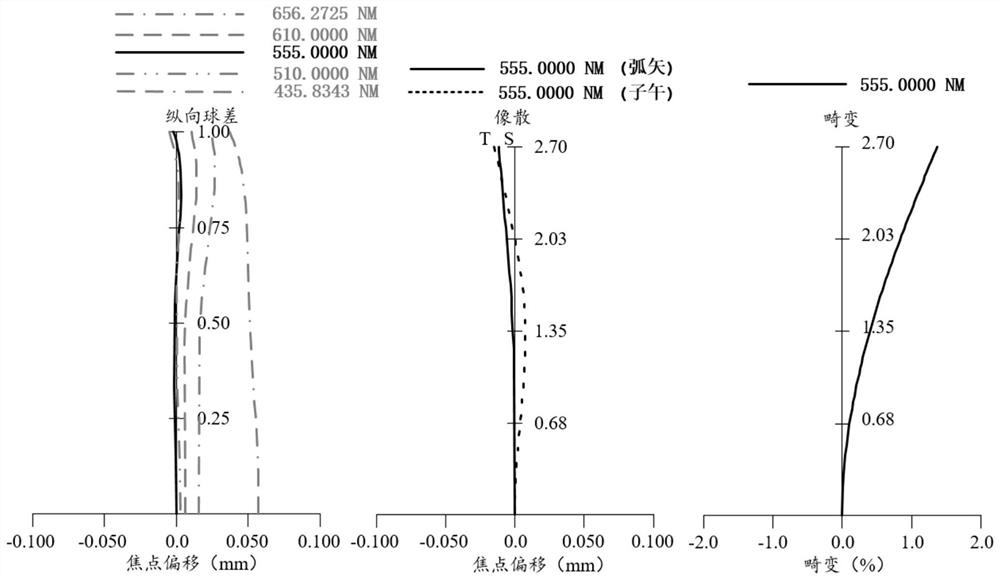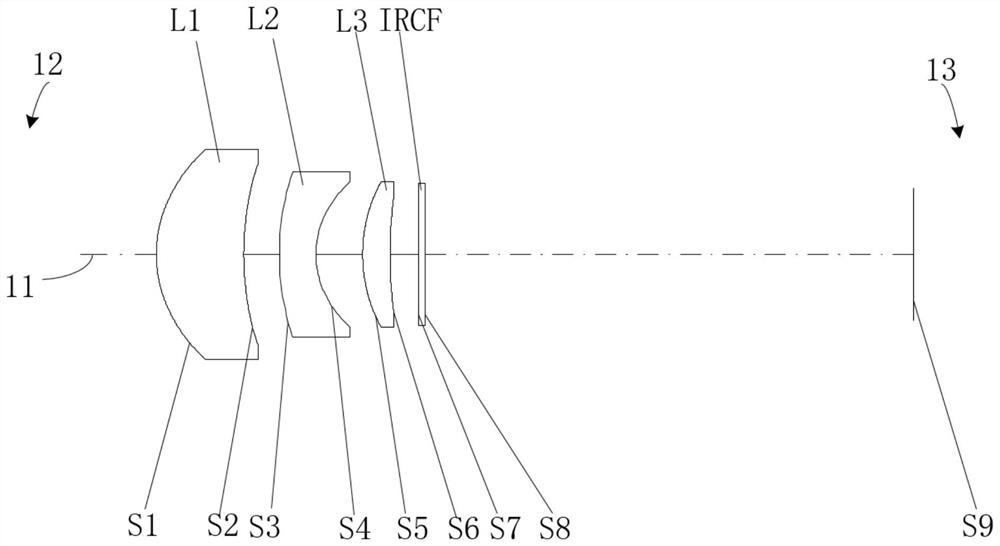Optical system, camera module and terminal equipment
An optical system, optical axis technology, applied in optics, optical components, instruments, etc., can solve the problems of too many lenses, difficult to achieve miniaturization, difficult to achieve telephoto characteristics, etc., achieve small overall length, achieve miniaturization and ultra-high thinning effect
- Summary
- Abstract
- Description
- Claims
- Application Information
AI Technical Summary
Problems solved by technology
Method used
Image
Examples
Embodiment 1
[0055] like figure 1 As shown, the straight line 11 represents the optical axis, the side of the first lens L1 away from the second lens L2 is the object side 12 , and the side of the third lens L3 away from the second lens L2 is the image side 13 . In the optical system provided in this embodiment, the order from the object side 12 to the image side 13 is a first lens L1, a second lens L2, a third lens L3, and an infrared filter element IRCF.
[0056] The first lens L1 has a positive refractive power, is made of glass, and is all aspherical.
[0057] The second lens L2 has a negative refractive power, is made of plastic material, and is spherical.
[0058] The third lens L3 has a positive refractive power, is made of plastic material, and is all aspherical.
[0059] The infrared filter element IRCF is arranged after the third lens L3, including the object side S7 and the image side S8. The infrared filter element IRCF is used to filter out infrared light, so that the light ...
Embodiment 2
[0073] like image 3 As shown, the straight line 11 represents the optical axis, the side of the first lens L1 away from the second lens L2 is the object side 12 , and the side of the third lens L3 away from the second lens L2 is the image side 13 . In the optical system provided in this embodiment, the order from the object side 12 to the image side 13 is a first lens L1, a second lens L2, a third lens L3, and an infrared filter element IRCF.
[0074] The first lens L1 has a positive refractive power, is made of glass, and is all aspherical.
[0075] The second lens L2 has a negative refractive power, is made of plastic material, and is spherical.
[0076] The third lens L3 has a positive refractive power, is made of plastic material, and is all aspherical.
[0077] The infrared filter element IRCF is arranged after the third lens L3, including the object side S7 and the image side S8. The infrared filter element IRCF is used to filter out infrared light, so that the light ...
Embodiment 3
[0088] like Figure 5 As shown, the straight line 11 represents the optical axis, the side of the first lens L1 away from the second lens L2 is the object side 12 , and the side of the third lens L3 away from the second lens L2 is the image side 13 . In the optical system provided in this embodiment, the order from the object side 12 to the image side 13 is a first lens L1, a second lens L2, a third lens L3, and an infrared filter element IRCF.
[0089] The first lens L1 has a positive refractive power, is made of glass, and is all aspherical.
[0090] The second lens L2 has a negative refractive power, is made of plastic material, and is all aspherical.
[0091] The third lens L3 has positive refractive power, is made of plastic material, and is spherical.
[0092] The infrared filter element IRCF is arranged after the third lens L3, including the object side S7 and the image side S8. The infrared filter element IRCF is used to filter out infrared light, so that the light e...
PUM
 Login to View More
Login to View More Abstract
Description
Claims
Application Information
 Login to View More
Login to View More - R&D
- Intellectual Property
- Life Sciences
- Materials
- Tech Scout
- Unparalleled Data Quality
- Higher Quality Content
- 60% Fewer Hallucinations
Browse by: Latest US Patents, China's latest patents, Technical Efficacy Thesaurus, Application Domain, Technology Topic, Popular Technical Reports.
© 2025 PatSnap. All rights reserved.Legal|Privacy policy|Modern Slavery Act Transparency Statement|Sitemap|About US| Contact US: help@patsnap.com



